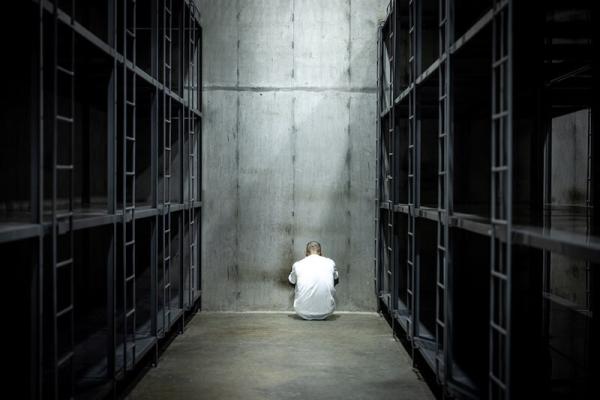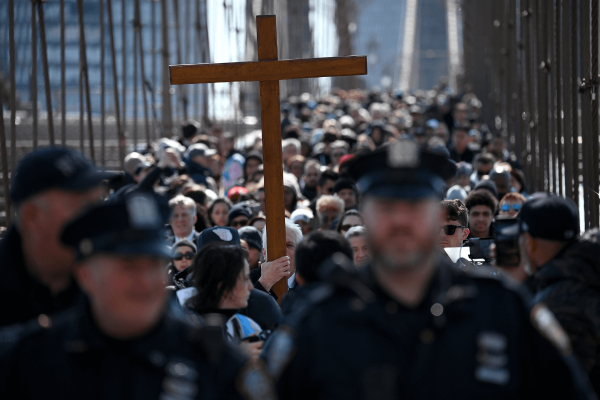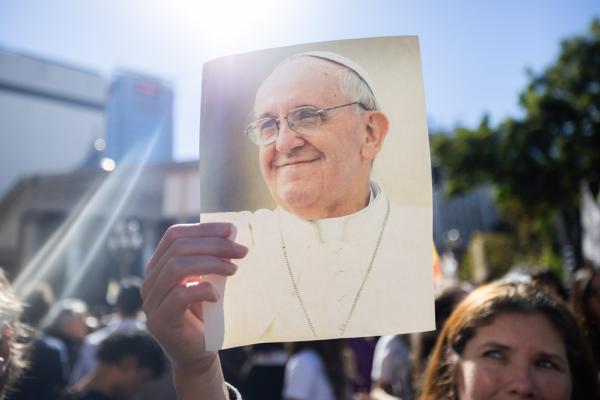Just about every minister I know is searching for a way to unite their community. It’s not hard to see why. America’s trend of polarization continues unabated as the general political opinions of conservatives and liberals have drifted farther apart. Over the years, I’ve witnessed fellow ministers attempt to hold congregants together by finding common ground around the latest tragedy to make national headlines. Hardly a week goes by without a natural disaster, a mass shooting, an immigration crisis, an African American harmed by police. “If your pastor doesn’t preach on [insert the latest tragedy here] find a new church!” This refrain, often repeated on social media, reminds pastors that our job is to address suffering and offer hope.
We hope that the suffering we’ve seen on our social media feeds will provide consensus. We convince ourselves that this moment, this tragedy, this picture of suffering will provide the common denominator that will spark people’s compassion. How can anyone look at the picture of a child running from tear gas and not feel compassion? By calling to mind these images in our sermons, we hope to open people up to hearing about different political solutions to the problem at hand. If anything, we’ll all agree that we must do something.
When images of such tragedies emerge, I imagine ministers will mention these pictures on Sunday morning during worship. I fear this gesture will have the same effect on our congregants and suffering people as the mention of the pictures of immigrant children detained in cages, the videos of unarmed African Americans getting shot by the police, the pictures of wildfires in California has had. It likely will not matter in any meaningful sense.
I’m not convinced that sharing images of suffering produce the kind of consensus we hope they will. This isn’t because people simply don’t care; it’s because of the nature of pain and photography. Writer Susan Sontag provides some clues. According to Sontag, if we’re looking to build solidarity and a more just world, images of suffering are the last place we should begin.
Pain
All people suffer at some point, though the degree varies. For those of us taking the pulpit, the universal nature of suffering provides an opportunity to rally around it and find a shared consensus on the problem. But pain, by its nature, isolates. I can hear about your pain. I can comprehend a mother’s fear at the tear gas that the U.S. military fires across the border at her and her children. I can’t actually experience that pain and that fear. It is hers alone.
Further, because the sight of pain arouses deep emotional responses, we ought to be leery of its ability to open people up to new thoughts, to new insights that might lead them to change their political convictions. While most of my curated social media feed decries acts of injustice committed by the powerful, I’m all too aware that viewing those same acts can become cause for celebration of others. As Sontag writes, “No ‘we’ should be taken for granted when the subject is looking at other people's pain.”
Belief in the universal nature of pain and that it can provoke compassion leads us to stronger and stronger pleas, more visceral representations of pain. Pastors then feel the need to ratchet up the experience in their sermons and ministry futiely hoping that if they can get congregants to feel something that will bring them together.
Not only is pain isolating, but we’d do well to think about what it means that we generally become informed about these matters of injustice through social media or television. Sontag’s book On Photography suggests that photographs — and by extension, videos — might be the wrong medium by which to raise awareness of suffering if the goal is to change things.
Photography
If pain itself isolates us from one another, photography isolates the sufferer from the history that led to the suffering. Photographs create a surface-level representation of the isolating experience of pain.
While writing this, I recalled a sermon I heard a few years ago in which the pastor made an impassioned appeal for the church to feel the pain he felt when looking at the pictures of a dead immigrant child washed ashore in a foreign country.
Thinking about this sermon, I easily called to mind the picture to which the pastor referred. I vaguely remembered that he died attempting to immigrate to another country during a crisis. I could not recall the country upon whose shores his body lay. I could not remember the date it happened. I have no recollection of the social or political circumstances that compelled him and his family to depart or even why he was in the water in the first place.
For those attempting to keep polarized congregation together, one allure to photographs of pain are their seeming ability to give us an interpretation-free representation of the world. The pain is simply there, on the surface. It cannot be argued with. Pictures, supposedly free from bias, allow us to preach on political matters without fear of conflict. They do this because pictures and the pain they display are seen as apolitical. But Sontag cautions against such optimism when it comes to photographs. “Photographs cannot create a moral position,” she writes, “but they can reinforce one — and help build a nascent one.”
I think of the sermons I’ve heard in churches, particularly ones with mostly white people, after the release of police body-camera footage that depict police officers inflicting violence upon unarmed African Americans in ways that some believe unjust. But just as often that these videos produce outrage, they also produce defensiveness. Some view them and think of the violence’s necessity, and that the video proves how challenging a police officer’s job is.
Faith Seeking Understanding
Our faith compels us to gaze upon the cross. Images of suffering invite us to see and experience that cross in the world and make an emotional connection between the one crucified then and the ones crucified now. We hold out hope that whether liberal or conservative, old or young, we can all agree that suffering is bad and that the church’s role is at least an acknowledgement of the injustice of suffering.
But what makes the crucifixion of Jesus significant isn’t the degree of suffering he underwent, but the kind of suffering he undertook. The Romans routinely crucified people. These crucifixions were bloody, agonizing affairs. We cannot understand Jesus’ crucifixion as more significant than any other without faith that Jesus himself was different. The cultivation of the faith to see suffering differently doesn’t just happen through scrolling past images on Twitter and Facebook. It’s a matter of grace.
St. Anselm is famous for his statement that the root of theology is faith seeking understanding. To some extent, I think this posture is right and has something to instruct us in our preaching and ministry more generally. In preaching and ministry, we shouldn’t only aim to persuade through experience, but work to provide understanding.
In her recent book, Interior States, Megan O’Gieblyn says, “Awareness is not the same as perspective; sometimes the former is an obstacle to the latter.” I wonder if we too often trade awareness for perspective. By focusing so closely on the act of injustice, we misrecognize the conditions that gave rise to the injustice. If our faith and preaching are a matter of seeking experience, we’ll fail to recognize that injustice is conditioned at all and that those conditions could be otherwise than what they are.
Giving a theological and social account of the conditions under which people suffer may help unify people in ways that viewing and referring to images of suffering cannot because of their isolating nature. I cannot feel your pain, but I can understand it. I can identify its cause, the ones producing it, and the ways in which they’re politically and economically empowered to do so. I may come to discover that they’re harming me too, even if it’s to a lesser degree, and out of that a “we” can be formed that seeks to transform the conditions producing pain.
Simone Weil writes that loving our neighbor means asking them “what is it that you’re going through?” Asking this question humanizes us and the one answering. It gives us space to put suffering in a context of understanding. It will not provide the alleviation of suffering itself, but that’s because alleviation only comes by changing the conditions that produce the suffering and those conditions need to be understood, not only felt.
Perhaps a question that we ought to answer is, “What is it that we are going through?” If the experiences of pain and suffering and the emotions they trigger when viewed in a picture or video disrupt understanding, what does it mean to quiet our spirits, to allow our faith to draw us to understanding?
Unity through a faith seeking understanding comes with a risk. Some understandings accord better with reality than others. Some understanding will lead us to see that we have friends and enemies and that our churches have to take sides politically. Understanding the conditions of injustice will mean we cannot avoid the conflict we hope to sidestep by forming our moral conscious with photographs of suffering. As leaders, we can build consensus but it’s far more likely that consensus will be built around a common fight, the fight to transform the systems and world that produce the suffering we scroll past.
Got something to say about what you're reading? We value your feedback!







